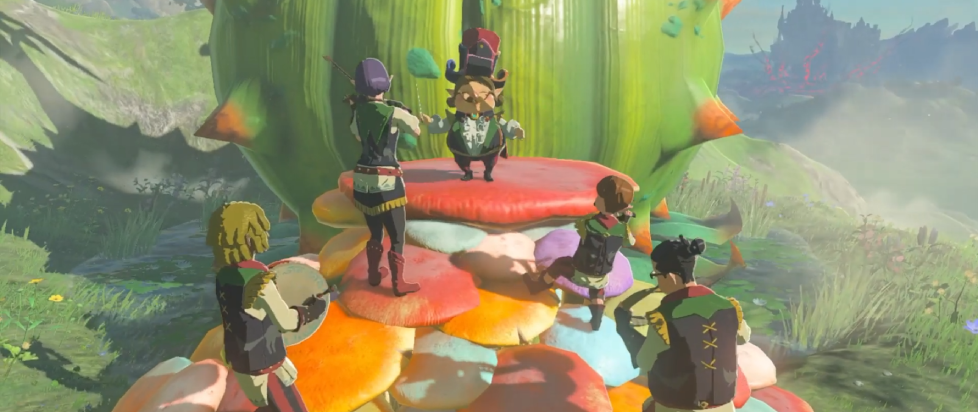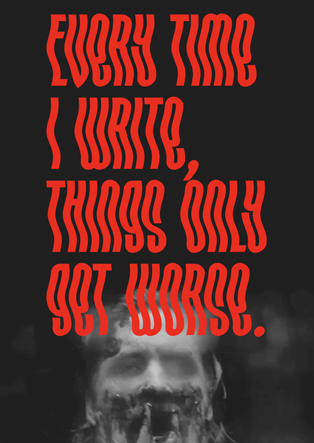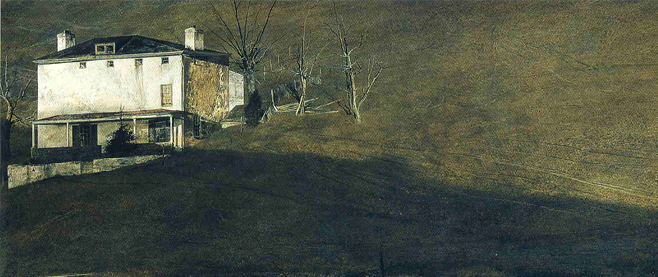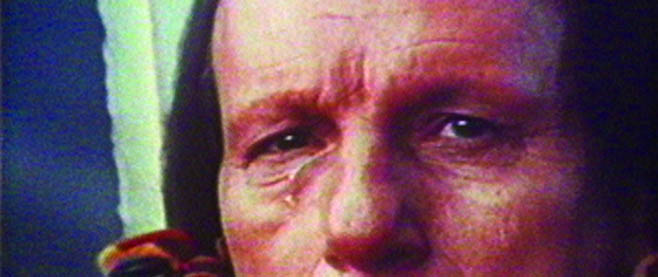
Getting the Band Back Together: Players Orchestrating Worlds
Outer Wilds is a lonely game. While traversing its clockwork solar system, feelings of uncertainty and trepidation will regularly rise in your belly as you hurtle headlong into a black hole, or brave the foggy, impossible labyrinth of Dark Bramble. The only companionship to be found during these escapades are five other members of your crew, Outer Wilds Ventures, each of them having set up camp on a different planet. Riebeck, Gabbro, Esker, Chert and Feldspar each sit welcomingly by a crackling fire, playing a tune on their instrument of choice.You sit, chat for a while over some toasted marshmallows, and then get back on your way.
After exploring for an hour or two, most players will experiment with how far they can launch their ramshackle ship into the distant reaches of space. If they then turn back, and aim their signalscope at their fast-disappearing sun, they will be met with the sound of these five musicians, spread across disparate planets, suddenly coming together in perfect rhythmic unison to form the game’s main musical theme. Here Outer Wilds subtly shows its core message in an entirely player-orchestrated way: Among the terrifying and unknowable blackness of a dying universe, the last signs of shared life from a world fast blinking out of sight are enough to give a flicker of hope, and the will to persevere.
This interlinking of gameplay, dynamic music and narrative design builds on an approach which has cropped up time and again across genres and generations. Characters are aligned with specific instruments, allowing a composer to efficiently establish associations between a game’s music and its inhabitants often without the player even noticing. One of the most successful examples of this approach is the unforgettable ending to Supergiant’s Pyre, in which the game’s minstrels Tariq and Celeste recount through song the story of your adventure, which each verse describing fate of each character as it occurred in your specific playthrough, accompanied by the timbre of a specific musical instrument reflecting that character’s personality. Supergiant’s games, all composed by Darren Korb, have always stood apart from the crowd through their smart implementation of player-driven diegetic music to build character, be it Red’s contemplative humming in Transistor, or the sorrowful lamentations of separated lovers Orpheus and Eurydice eventually joining in perfect harmony in Hades.

Designers have been incorporating this technique into gameplay since the days of Super Mario World, in which a rhythmic bongo track kicks in under the game’s music whenever Mario is riding Yoshi (neatly mirrored in Super Mario Wonder in which a low brass track starts up upon transforming into an elephant). Nintendo games, typically light on dialogue, often use these timbral associations as a means of evoking the essence of a character without relying on lengthy conversations. This is particularly useful with silent protagonists like The Legend of Zelda’s Link, and indeed the Zelda games are some of the best examples of weaving these musical associations into gameplay.
In 2017’s Breath of the Wild, specific instruments are connected to the game’s four main races, and each is heard in their respective towns. As you gradually invite residents from the four corners of Hyrule to the new settlement of Tarrey Town, the instrument associated with each society is added in turn to the musical theme of the burgeoning settlement. In 2023’s follow-up, Tears of the Kingdom, we get a more character-specific take on this idea, in which musicians in a wandering troupe must be gathered from across Hyrule in order to wake the great fairies. This has gameplay rewards, sure, but the more satisfying pay-off is hearing the melodies and harmonies of the full band whenever you happen upon them at a stable. Their gentle evolution of Breath of the Wild’s stable theme fits perfectly with the game’s motifs of re-establishing a land we know into something new yet familiar. The music would be lovely regardless, but the knowledge it’s the result of your actions in bringing this scattered group together makes it all the more rewarding.
While all this narrative weight is doubtless effective, there’s a lot to be said for using similar approaches as a way to simply relish the joy of good music while involving the player in the process of its creation. The climactic set-piece of Mario Odyssey’s New Donk City level requires Mario to traverse the rooftops and alleyways of the city to find members of Pauline’s jazz band, their individual instruments playing lonely melodies across the level’s different districts. Upon finding the whole band, this quest culminates in a marvelously over-the-top festival, involving nostalgia-heavy 2D platforming sections across the cityscape, all soundtracked by the newly-assembled band playing the game’s main theme, “Jump Up Superstar”.

This approach can do wonders for building up anticipation and payoff through gameplay, and memorable examples can be seen in games of all types – from gathering musicians across Hitman 2’s Santa Fortuna level to facilitate your planned assassination during their performance, to assembling an orchestra in It Takes Two to encourage May to finally embrace her passion and perform on stage (probably accompanied by some heavy-handed metaphor about marital harmony or something). It can also work for quieter, more poignant moments too – against the backdrop of Final Fantasy VIII’s maniacal sorceresses and international wars, our band of teen mercenaries participate in the Balamb Garden Festival, during which you instruct your group to pick up different instruments and perform, which, depending on your choices, will soundtrack a quiet, heartfelt conversation between protagonists Squall and Rinoa, and even alter the course of the conversation itself. All these examples work to give diegetic context to a game world’s big musical moments, while giving a sense of player-ownership over some significant storytelling beats.
In terms of giving players agency over orchestrating their world’s music, it’s hard to think of a better recent example than Sea of Thieves. A variety of shanties can be unlocked throughout the game, which can be played in a group of real players, each on their piratey instrument of choice, and led by whoever first kicks off the tune. While there are some gameplay benefits to playing, like charming snakes to avoid being bitten, it’s clear that the main reward for unlocking these shanties is the pure joy and performance of jamming out with your crew. This is evidenced by the fact that the music itself is altered by the players actions, becoming out of tune when drunk, or muffled when underwater, all to maximize the immersive fun of the whole thing.
Games are often criticized, perhaps fairly, for relying on destruction and antagonism for their core mechanical structure. The reason bringing musicians together works so well as a gameplay trope, is that it capitalizes on connection and creativity at its core in a mechanically satisfying, and often narratively significant way. Parallels can be seen across other innovative examples of game storytelling; in Chants of Senaar, isolated communities struggle to communicate across language barriers, but in the end, their unique vocabularies are shown to have commonalities at their core which ultimately unite these separated castes in their shared humanity. Ultimately, these moments are all about emphasizing harmony, and do so in an interactive way that only games can conjure.
Eventually, when floating through Outer Wilds’ inky skies for long enough, the world you left behind long since imperceptible to the naked eye, death inevitably comes, as it always does. But now you know, despite the apparent desperation facing your species, that if any other creature from a distant galaxy were to look for signs of life among these barren rocks, they would not hear five lonely musicians trying to stave off the darkness, but the voice of a single people, staring as one into the warm fire and thinking of home. In a moment outside of time and space, before the end of everything, you finally see the game’s ultimate reward – the whole crew gathered around that fire, playing together. As Pyre’s Tariq and Celeste would put it: “Strands in a braid, ‘til the end”.
———
Jonathan is a biological researcher by day, but spends much of the rest of his time obsessing over games, music and music in games. You can follow him on Bluesky and at Medium.




